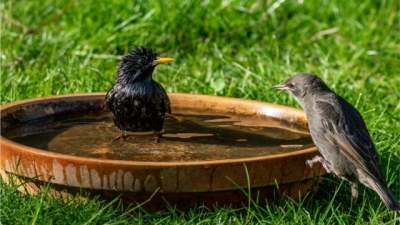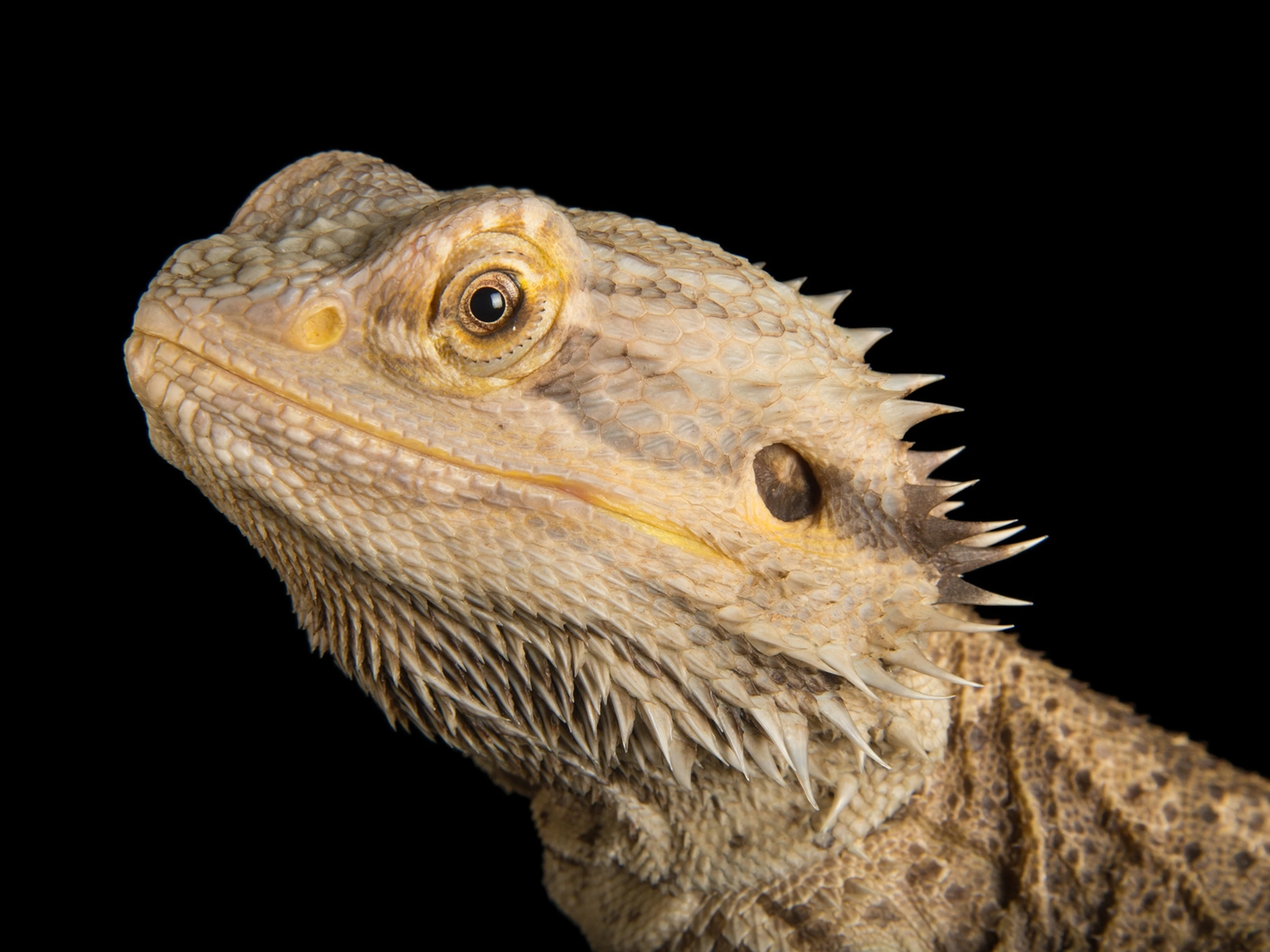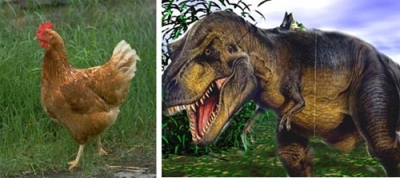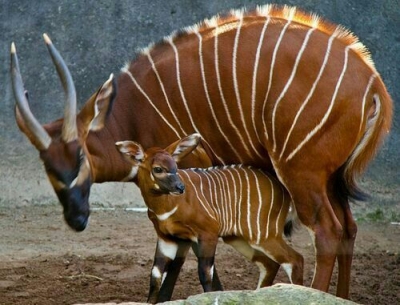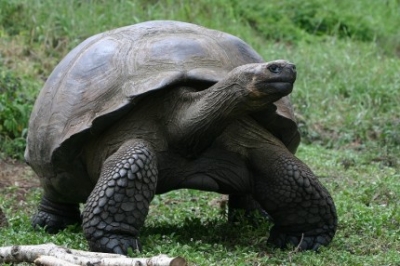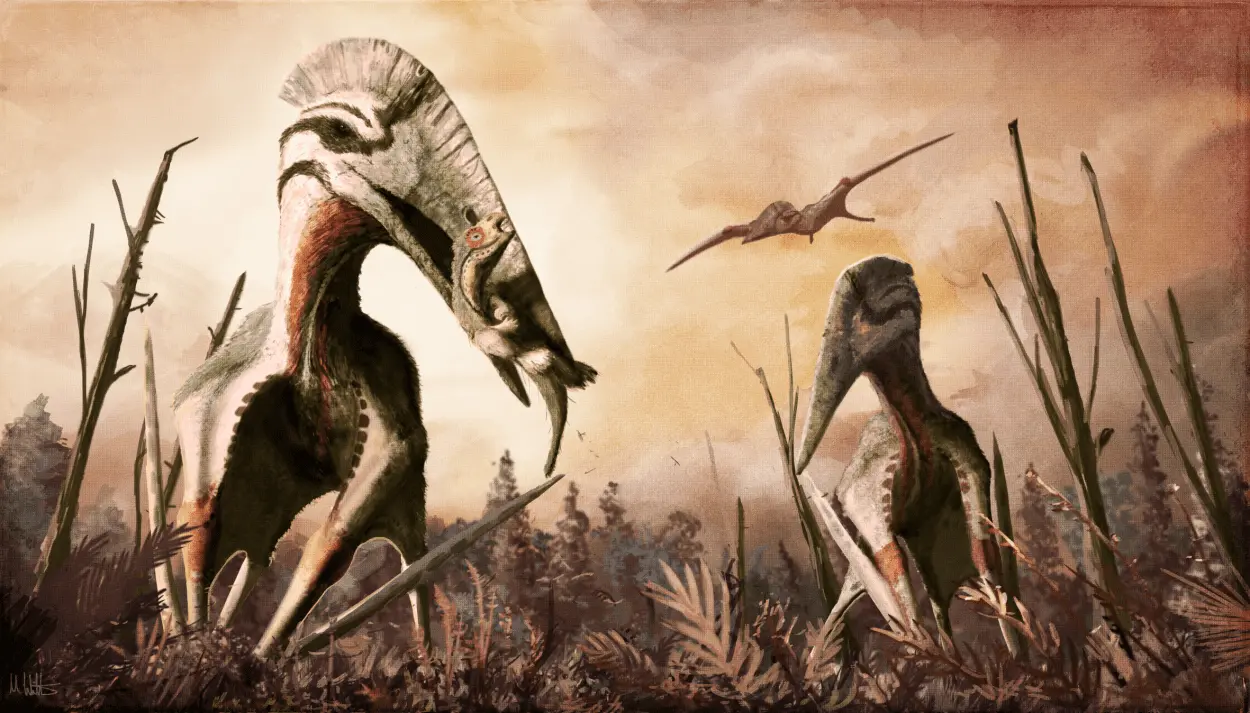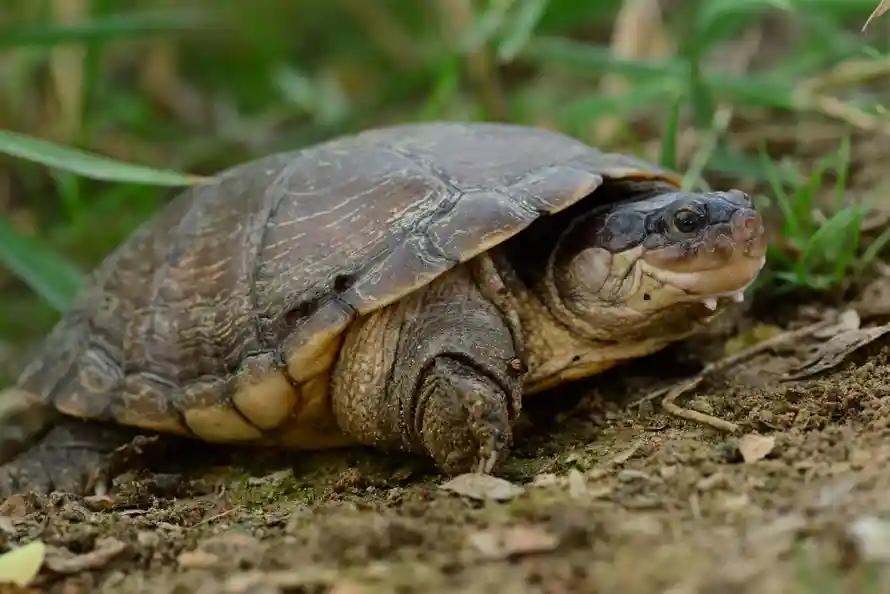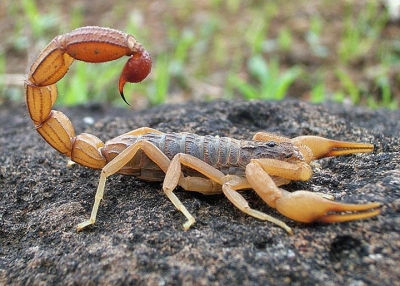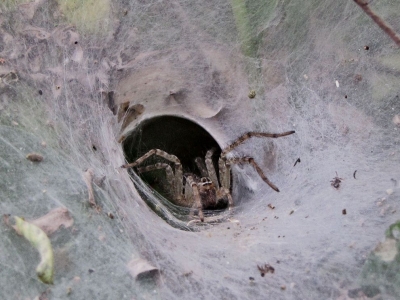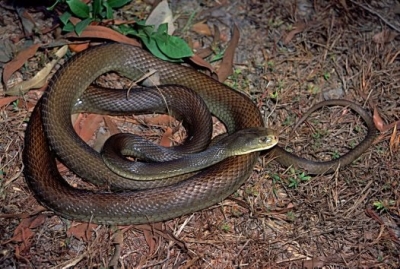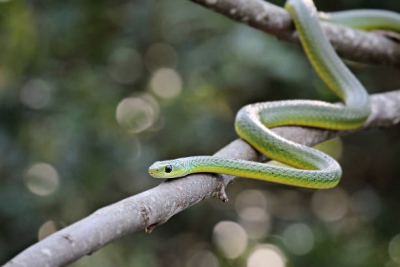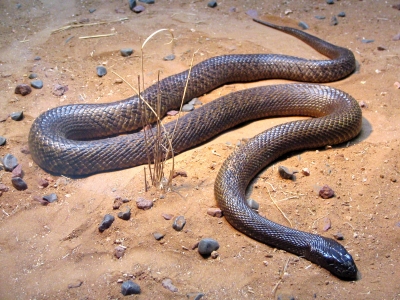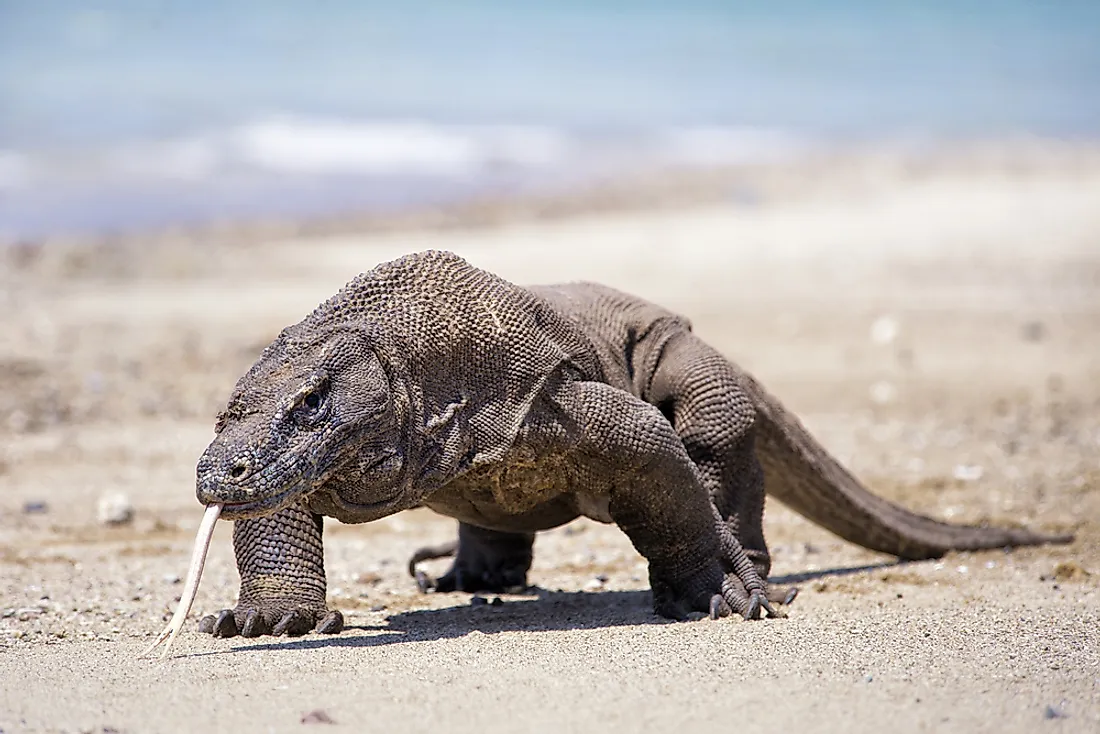
The Komodo dragon is the largest living lizard in the world. These wild dragons typically weigh about 154 pounds (70 kilograms), but the largest verified specimen reached a length of 10.3 feet (3.13 meters) and weighed 366 pounds (166 kilograms).
Komodo dragons are large lizards with long tails, strong and agile necks, and sturdy limbs. Their tongues are yellow and forked. Adults are an almost-uniform stone color with distinct, large scales, while juveniles may display a more vibrant color and pattern.
The muscles of the Komodo's jaws and throat allow it to swallow huge chunks of meat with astonishing rapidity. Several movable joints, such as the intramandibular hinge opens the lower jaw unusually wide. The stomach expands easily, enabling an adult to consume up to 80 percent of its own body weight in a single meal, which most likely explains some exaggerated claims for immense weights in captured individuals. When threatened, Komodos can throw up the contents of their stomachs to lessen their weight in order to flee.
Although males tend to grow larger and bulkier than females, no obvious morphological differences mark the sexes. One subtle clue does exist: a slight difference in the arrangement of scales just in front of the cloaca. Sexing Komodos remains a challenge for human researchers; the dragons themselves appear to have little trouble figuring out who is who.
Komodo dragons eat almost any kind of meat, scavenging for carcasses or stalking animals that range in size from small rodents to large water buffalo. Young feed primarily on small lizards and insects, as well as snakes and birds. If they live to be 5 years old, they move onto larger prey, such as rodents, monkeys, goats, wild boars and deer (the most popular meal). These reptiles are tertiary predators at the top of their food chain and are also cannibalistic.
Although the Komodo dragon can briefly reach speeds of 10 to 13 mph (16 to 20 kph), its hunting strategy is based on stealth and power. It can spend hours in one spot along a game trail — waiting for a deer or other sizable and nutritious prey to cross its path — before launching an attack.
Most of the monitor's attempts at bringing down prey are unsuccessful. However, if it is able to bite its prey, bacteria and venom in its saliva will kill the prey within a few days. After the animal dies, which can take up to four days, the Komodo uses its powerful sense of smell to locate the body. A kill is often shared between many Komodo dragons.
Monitors can see objects as far away as 985 feet (300 meters), so vision does play a role in hunting, especially as their eyes are better at picking up movement than at discerning stationary objects. Their retinas possess only cones, so they may be able to distinguish color but have poor vision in dim light. They have a much smaller hearing range than humans and, as a result, cannot hear sounds like low-pitched voices or high-pitched screams.
The Komodo dragon's sense of smell is its primary food detector. It uses its long, yellow, forked tongue to sample the air. It then moves the forked tip of its tongue to the roof of its mouth, where it makes contact with the Jacobson's organs. These chemical analyzers "smell" prey, such as a deer, by recognizing airborne molecules. If the concentration of molecules present on the left tip of the tongue is greater than that sample from the right, the Komodo dragon knows that the deer is approaching from the left.
This system, along with an undulatory walk, in which the head swings from side to side, helps the dragon sense the existence and direction of food. At times, these reptiles can smell carrion, or rotting flesh, up to 2.5 miles (4 kilometers) away.
This lizard's large, curved and serrated teeth are its deadliest weapon, tearing flesh with efficiency. The tooth serrations hold bits of meat from its most recent meal, and this protein-rich residue supports large numbers of bacteria. Some 50 different bacterial strains, at least seven of which are highly septic, have been found in the saliva. Researchers have also documented a venom gland in the dragon's lower jaw. In addition to the harmful bacteria, the venom prevents the blood from clotting, which causes massive blood loss and induces shock.
The Komodo's bite may be deadly, but not to another Komodo dragon. Those wounded while sparring with each other appear to be unaffected by the bacteria and venom. Scientists are searching for antibodies in Komodo dragon blood that may be responsible.
The lizard's throat and neck muscles allow it to rapidly swallow huge chunks of meat. Several movable joints, such as the intramandibular hinge, open its lower jaw unusually wide. The dragon's stomach also easily expands, enabling an adult to consume up to 80 percent of its own body weight in a single meal. When threatened, Komodo dragons can throw up the contents of their stomachs to lessen their weight in order to flee.
Komodo dragons are efficient eaters, leaving behind only about 12 percent of their prey. They eat bones, hooves and sections of hide, as well as intestines (after swinging them to dislodge their contents).
At the Smithsonian's National Zoo, the Komodo dragon eats rodents, chicks and rabbits. Occasionally, he consumes fish and carcass meals of beef.
Credit : National zoo Smithsonian education
Picture Credit : Google

